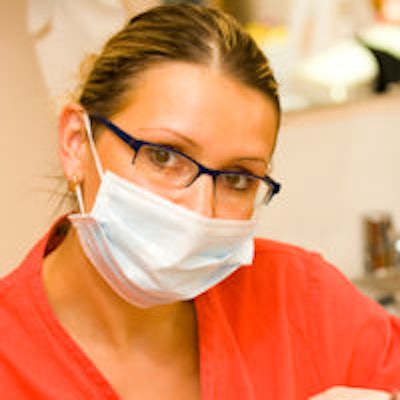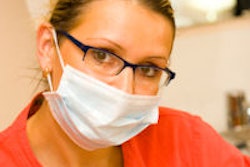
Innovative models using dental therapists and hygienists can provide cost-effective dental care to some of the millions of Americans who now lack it and need it the most, according to a new study from the Pew Charitable Trusts. The report examines three nonprofit settings where midlevel providers (MLPs) work as part of larger dental teams.
One of the settings in the report, entitled "Expanding the Dental Team: Increasing Access to Care in Public Settings," focused on a California program that connects specially trained hygienists in schools and other public settings to supervising dentists using telehealth technology.
The study also showed how dental therapists in Minnesota and rural Alaska are helping nonprofit clinics stretch dollars to serve more low-income patients.
The case studies show that MLPs can expand access to care in underserved communities, while more than paying for themselves with the revenues they earn. The researchers found wide variation among the practices but concluded that all three models expand care to more low-income people. This report builds on an earlier Pew analysis that studied private practice dentists hiring therapists to extend patient care while continuing to generate profit.
Virtual Dental Home
The Virtual Dental Home is a demonstration project operated by the University of the Pacific Arthur A. Dugoni School of Dentistry in San Francisco. It features nine teams delivering care to more than 40 rural, inner city, and suburban sites across California. It was established in 2010 by Paul Glassman, DDS, MA, MBA, director of the school's Pacific Center for Special Care.
 Paul Glassman, DDS, MA, MBA.
Paul Glassman, DDS, MA, MBA.Dental hygienists perform screenings for patients in community settings such as schools, Head Start programs, nursing homes, and rural areas. The information collected is sent electronically to a supervising dentist who creates a treatment plan to be implemented.
The data are made available electronically to dentists at clinics or offices who advise the hygienists what preventive and routine restorative care should be done. The services provided included cleanings, sealants, fluoride, x-rays, chart preparation, oral hygiene instruction, nutritional counseling, and placement of interim therapeutic restorations.
Patients requiring more complex care are referred to dentists who can review the records before an office visit, which saves preparation time. In addition to the cost savings from preventive and routine care provided by hygienists, the study authors noted, the program also spares patients and their families the time and expense of traveling to an office, unless further care is needed.
Elementary schools
The study analyzed three elementary schools from December 2012 to November 2013. Some 201 students were treated, with an average of 2.2 visits per student. Hygienists performed an average of 6.4 procedures per child per visit, with per-visit costs ranging from $111 to $115.
“We're taking people who have not had dental care before ... and we're detecting advanced disease that people might not have realized was there. We're making referrals and trying to get people into dental offices.”
The MLPs found that many students had moderate to high rates of caries and significant levels of plaque. Oral hygiene tended to be poor, and students had little nutritional education or knowledge about dental health. For many students, the Virtual Dental Home was their first experience with a dental provider or their first nonemergency visit, the study authors revealed.
Hygienist Lisa Greenshields, RDH, who worked at a Sacramento, CA, school, told researchers that when she asked students if their teeth hurt, many replied, "Only when the air is cold," or "Only when I drink water," or "Only when I breathe in deep," or "Only when I chew."
"And I think to myself, that's all day long, all through class, at night, all day, and for who knows how long," she stated.
But efforts to educate the children did produce some gratifying results, Greeshields noted. After showing them the effect of soda on teeth, students told her, "Oh, we're not drinking soda anymore," she told researchers.
Greenshields estimated that she can address all the dental care needs of about 60% of the children she serves. During the year examined in the study, 35 of the 93 students served (38%) were referred for follow-up dental care.
"As time goes by, it's becoming clear that this approach is actually a way that dentists can expand their practices," Dr. Glassman stated in the report. "We're taking people who have not had dental care before and were not likely to get it, and we're detecting advanced disease that people might not have realized was there. We're making referrals and trying to get people into dental offices."
Funding
The Virtual Dental Home project is funded predominantly by state, federal, and private grants. However, the researchers estimated that revenue generated by billing California's Medicaid program -- which has one of the lowest reimbursement rates in the U.S. -- would cover more than half of the program's costs. And at the national level, where average salaries are lower and the average Medicaid reimbursement rate is higher, Medicaid payments could exceed program costs, the study authors noted.
California does not provide Medicaid reimbursement for dental services using telehealth technology. However, pending legislation would allow this expanded scope of practice for dental assistants and hygienists and also allow Medicaid billing.
California Medicaid pays 33% of average commercial dental fees, which would yield an average per-visit payment of $61. Thus, in California, Medicaid would cover 53% to 55% of the Virtual Dental Home program costs for the dental care of 201 elementary school children, according to the study authors.
The average per-visit cost using U.S. salary estimates for dental hygienists and dentists ranges from $95 to $99. Using an average national Medicaid reimbursement rate of 61% of commercial dental fees, the average reimbursement rate per visit was estimated at $112, which would more than cover program costs, the study authors found.
Dr. Glassman noted that the study did not consider potential revenue that would result from dentists providing advanced treatment in their offices or from health centers that bill based on a fixed encounter rate. "We believe that if these additional revenues and situations were considered, the program would at least break even, if not produce a positive bottom line in both the fee-for-service or the encounter-based payment systems," he told DrBicuspid.com. "We believe that over time this system can go a long way to improving the oral health of our most vulnerable and underserved citizens at a low cost."
Alaska and Minnesota
Two dental therapists provided care to 1,352 patients at a tribal-owned clinic in Alaska in 2012, many of whom received regular access to dental care for the first time, according to the report authors. When compared with the reimbursement value of the care they delivered, the therapists exceeded their costs of employment by a combined $216,000.
In Minnesota, a dental therapist hired by a "safety-net" clinic that serves a primarily low-income and heavily immigrant population conducted 1,756 patient visits in the study year. The estimated Medicaid revenue she generated exceeded her employment costs by more than $30,000, leading the clinic to hire a second dental therapist to address further unmet needs, the study authors wrote.
Several states are considering midlevel dental providers in their efforts to address such needs. Legislators in Maine recently approved a version of the dental therapist model, following the lead of Minnesota and Alaska.
ADA opposition
The ADA has steadfastly opposed allowing MLPs to do restorations and extractions, and has released reports that concluded the MLP model is not economically realistic or sustainable.
As part of a larger Action for Dental Health initiative unveiled last year, the ADA has promoted its own alternative model, a community dental health coordinator, who would be trained to deliver oral health education and prevention services.



















